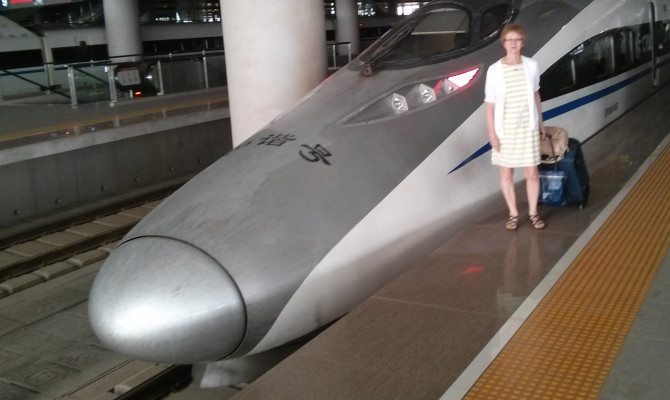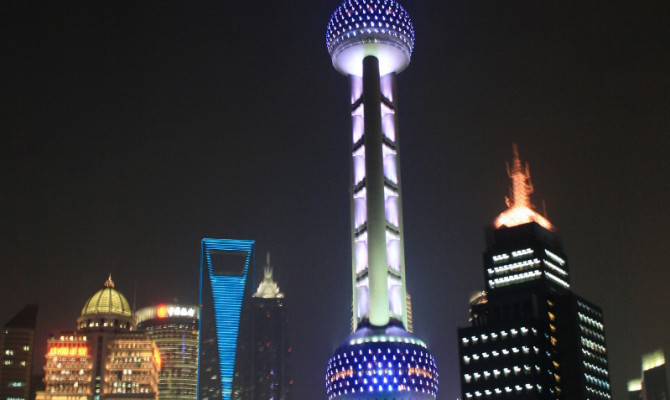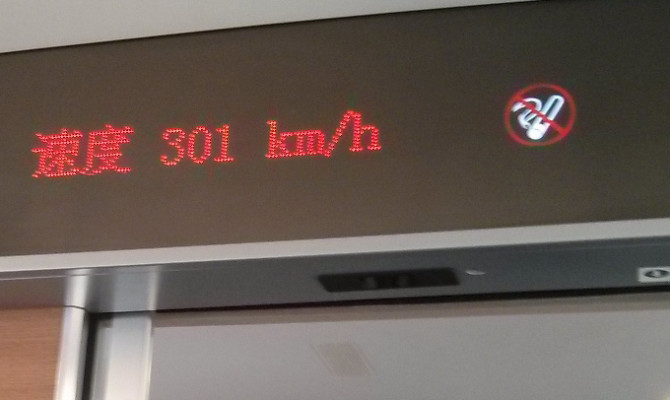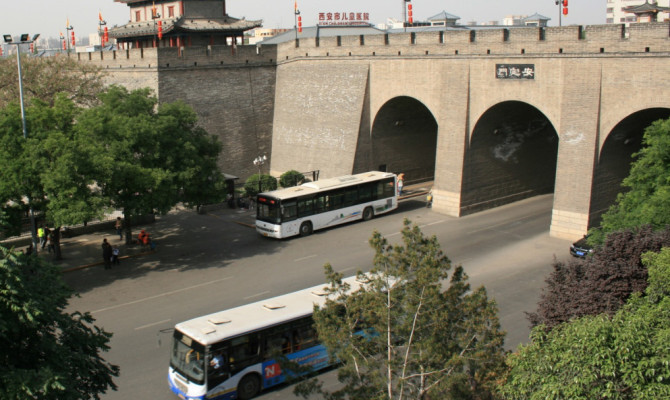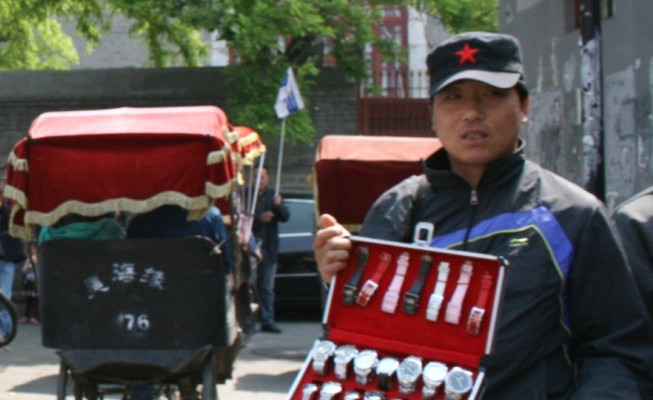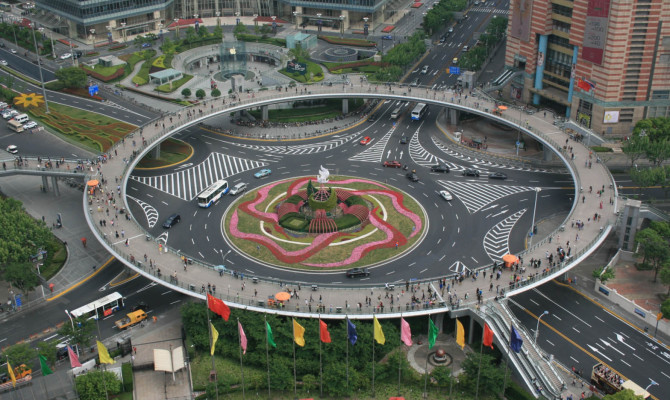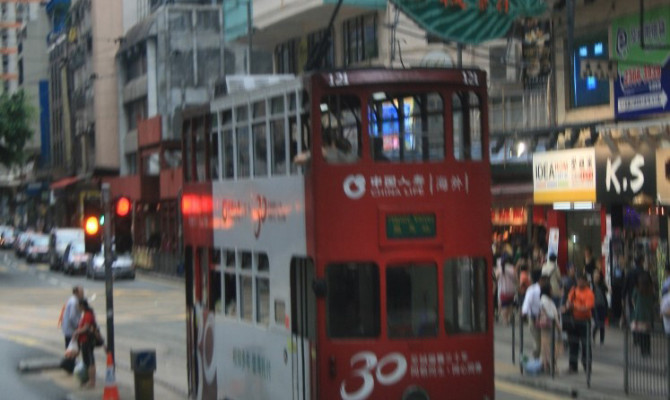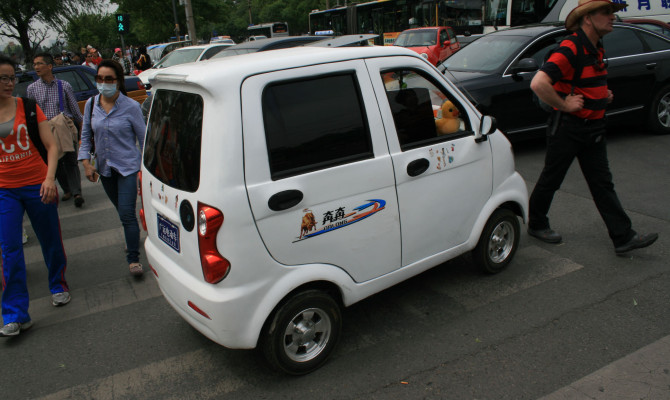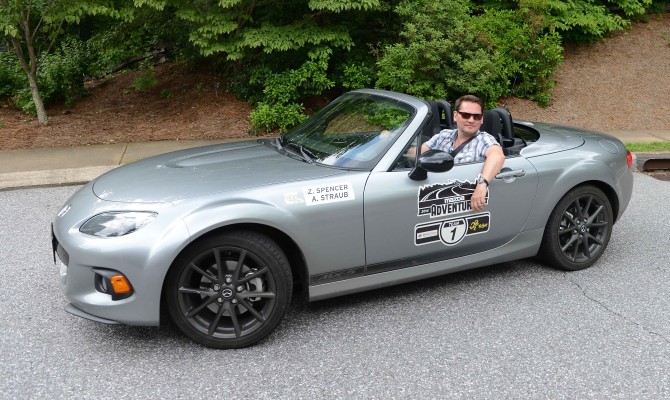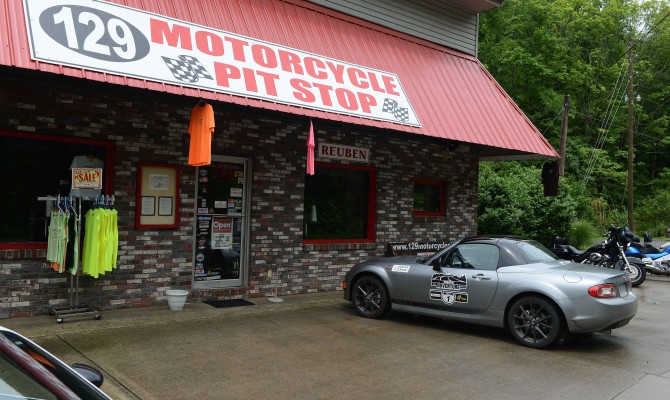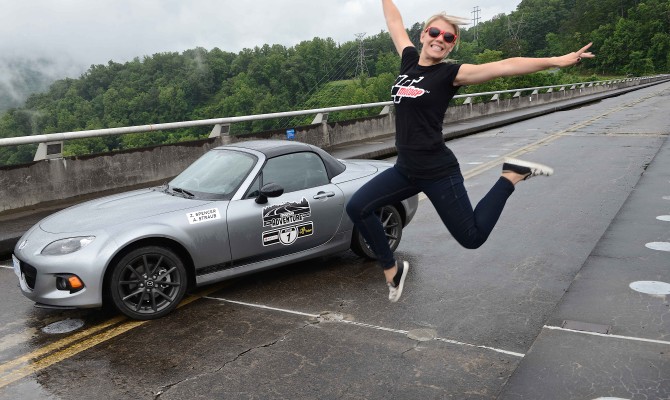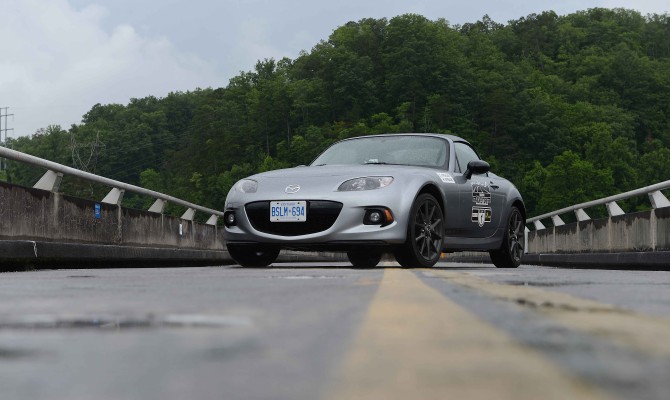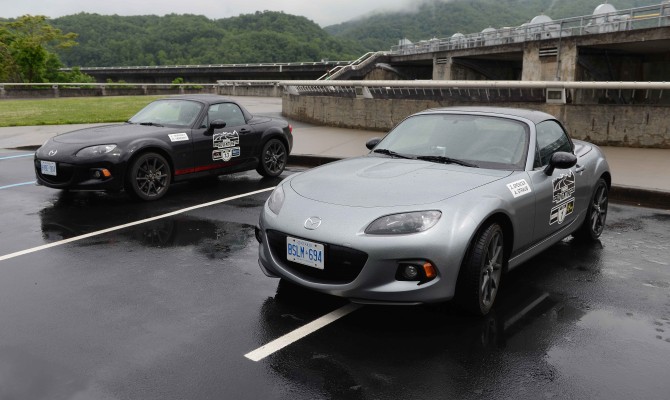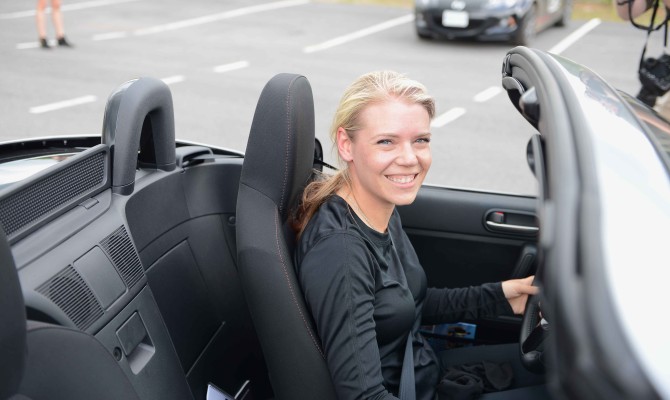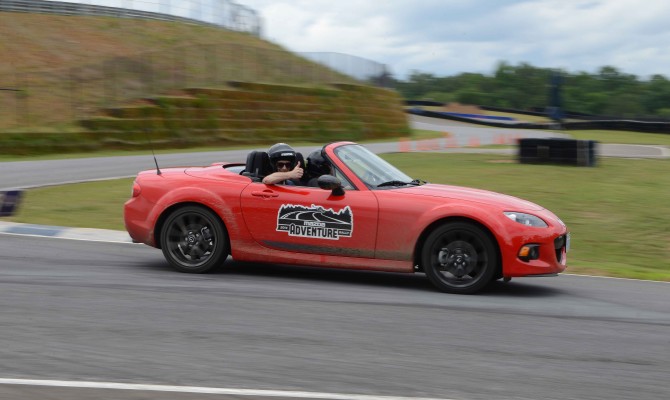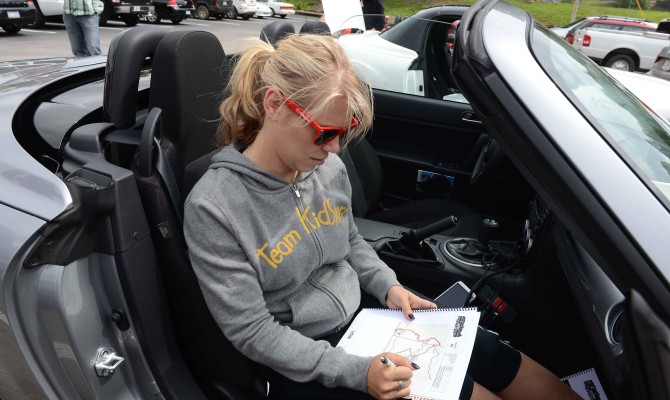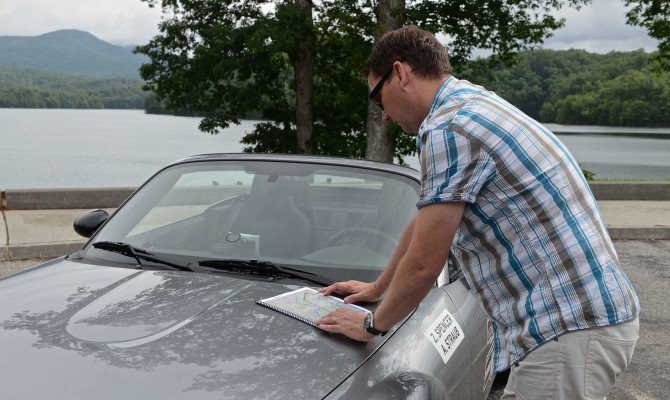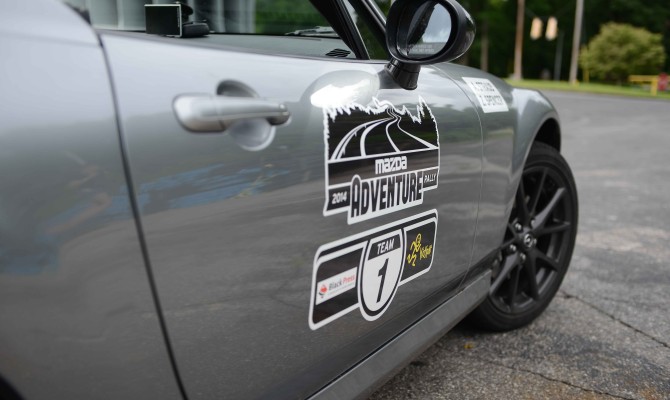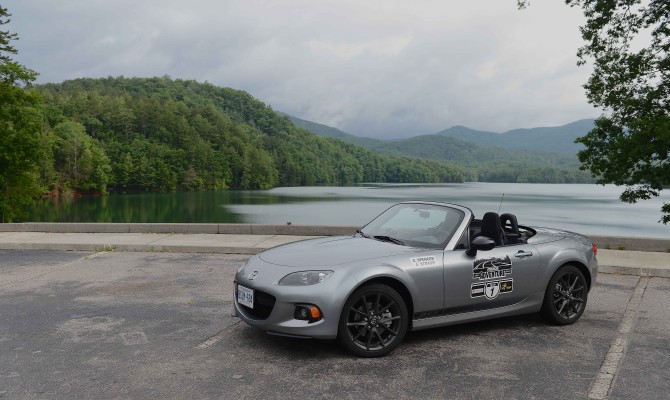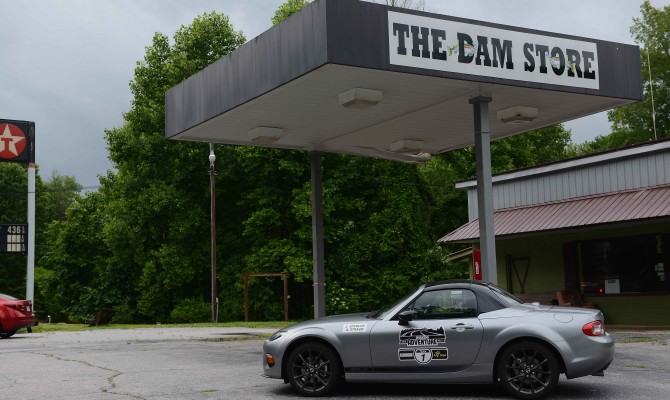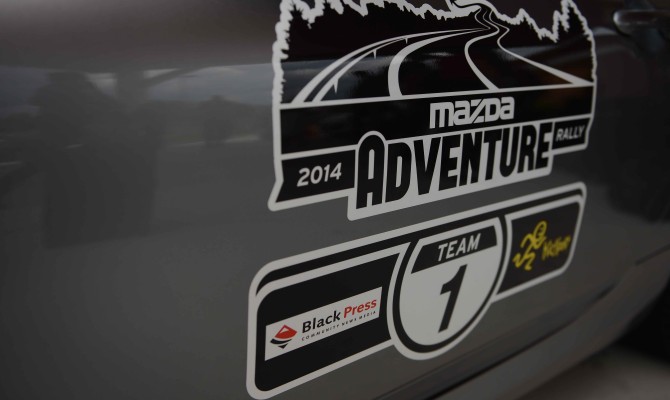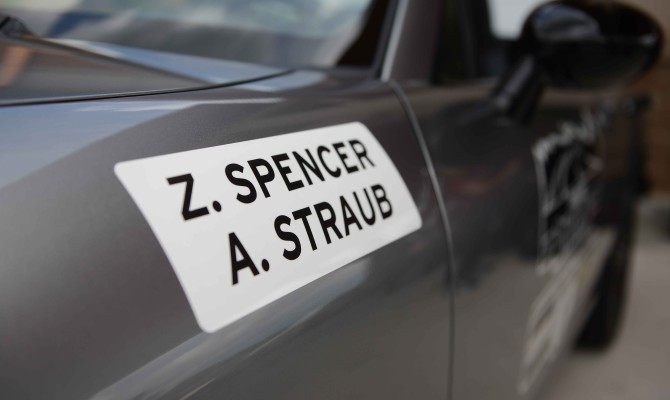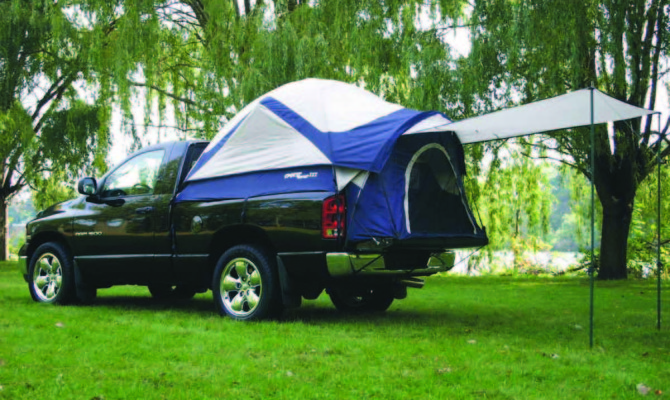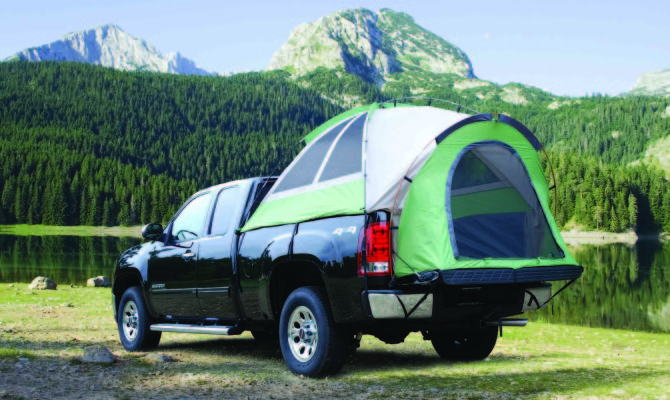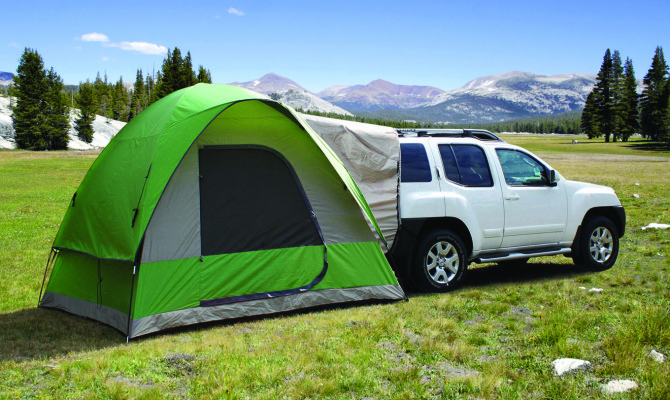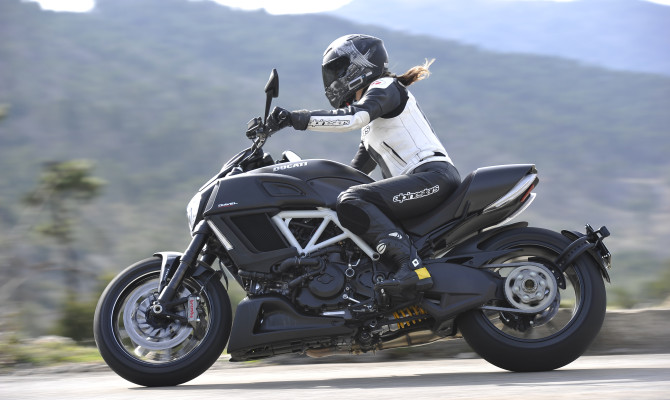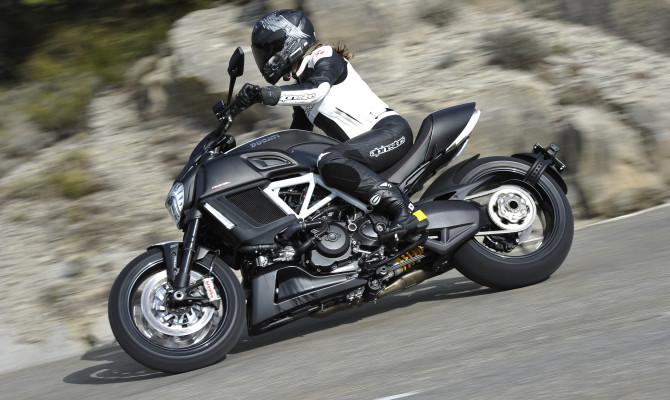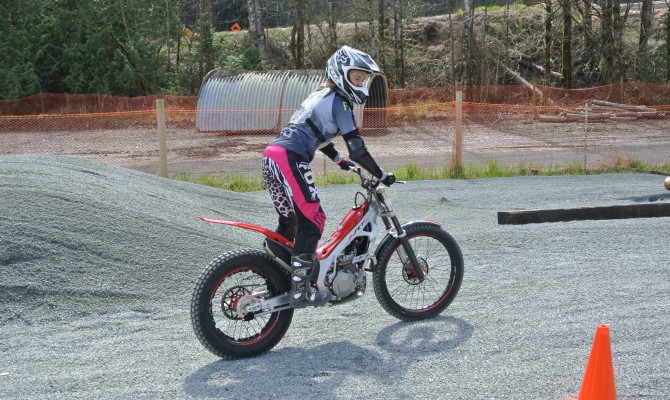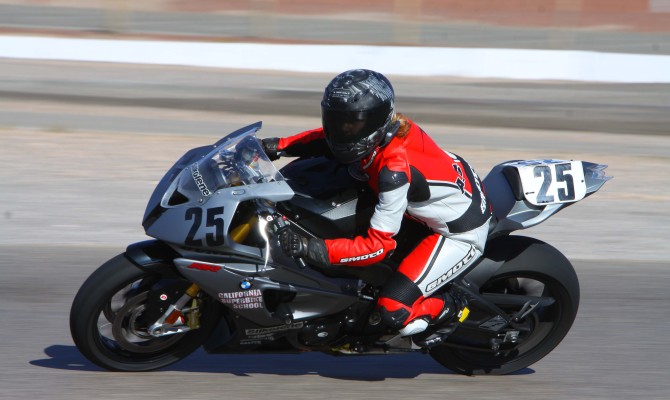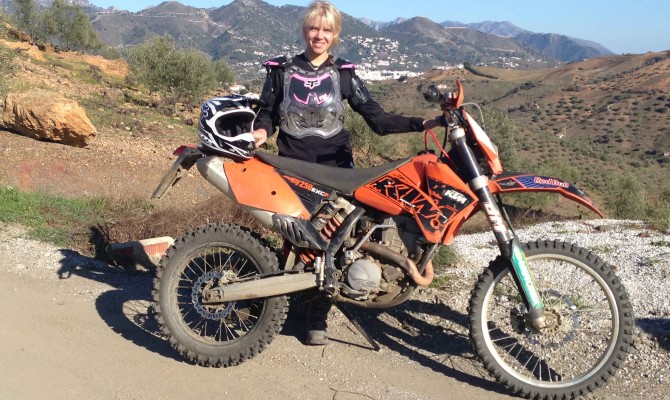The rush period, on a return trip from downtown on the Metro was surprisingly orderly and no different from SkyTrain on a busy hockey night, though far less boisterous…
“Rolex or Mao hat!” was the street hawker’s sales cry, as our rickshaw sped past him through the narrow streets of old Beijing.
It could also be the question posed for an emerging super-nation struggling to blend new-world economics with a communist social order.
Our four-city, 15-day tour of China included many other interesting and modern forms of transportation. To start with, we were very impressed with the cleanliness of airports and train stations. Eating or drinking is not allowed on metro trains in Beijing and Hong Kong and another plus was having important signage in English, as well as Chinese.
China now has more than four billion kilometres of highways and expressways, for road users. Rail travel is inexpensive and popular, and carried more than two billion passengers last year. The high-speed rail line system is expanding rapidly and expected to reach 18,000 km of track by the end of 2015. Shanghai also boasts the world’s first ultra high-speed maglev rail line.
In fact, the only old-world transport during this tour was that rickshaw, which could also be described as a pedi-cab. The only other rickshaws we saw were a few for sale at a closed “for hire” location near a ferry terminal in Hong Kong. The other city we visited was Xi’an, a famous fortress city at the Asian end of the historic “Silk Road”. It’s also the home of Terracotta Warriors, a UNESCO world heritage site.
Cars: China is the largest auto market in the world. More new vehicles are sold in China every year than in all of North America. While it has about a dozen major home auto manufacturers, most have production agreements with foreign auto makers.
Which explains why, for the most part, you’ll see the same Volkswagens, Buicks, Hondas and Toyotas that you’ll find on any street in Vancouver. How they’re driven is different. Many drivers ignore crosswalk rules, so it’s advisable to cross busy intersections with a group of fellow pedestrians, there’s safety in numbers!
Our in-car experiences were mostly taxis and all were Toyota Crown models. In fact, in all four cities, it seemed like every taxi was a red and white Toyota … even in Hong Kong where they drive on the left side of the road, a British legacy. One memorable drive was a speedy, wild taxi ride to the Airport in Shanghai, a “kiss the ground” on arrival experience. Should have taken the train.
Trains: Out first train experience was in the Beijing Metro system and it’s the fastest way of getting downtown. Even though there are vehicle restrictions that only allow odd and even license plates on alternative days, traffic congestion is a problem.
Beijing has the second longest subway system (in terms of track length) in the world (after Shanghai), but its average weekday ridership is over 10 million. During our week in the city, it actually recorded a world one-day ridership record of 11.24 million. By comparison, the weekday ridership on the SkyTrain system in Metro Vancouver is less than 400,000.
It’s certainly a good idea to plan a Beijing metro trip in advance, but we found it surprisingly easy to navigate. The rush period, on a return trip from downtown on the Metro was surprisingly orderly and no different from Skytrain on a busy hockey night, though far less boisterous.
We made an early morning start in Beijing to catch a bullet train to Xi’an. This 1,144-kilometre trip use to take more than 11 hours, but a high-speed (over 300 km/hour) train can do it in less than five. Impressively smooth, relatively quiet and comfortable, it’s a relaxed mode of travel and you can move around as much as you want. You don’t fully appreciate the high rate of movement until another bullet train passes in the opposite direction – there’s a sudden blur, whoosh and it’s gone!
Maglev looks like a traditional train until you realize it uses magnetic levitation – no wheels! Powerful magnets provide both lift and forward thrust and it can reach speeds of more than 400 km/hour. Unlike friction-based (wheeled) rail, it’s unaffected by snow, ice or rain.
The ride is also more cushioned ride than the bullet train. The track, which is about 30 km long, had banked corners and the trip took about ten minutes.
Last but certainly not least: A truly unique and relatively new transportation structure in Shanghai is the Pearl Loop Pathway. Above a massive roundabout in the heart of the financial district, this wide elevated circular pedestrian pathway has street-level escalators and connections to business towers and tourist attractions, including Shanghai’s famous Oriental Pearl Tower.
A transforming giant with a rich history, China never ceased to amaze.
There is so much goodness dialled into this little car that it rewards the driver and passenger hour-after-hour…
With a flash of lightning beside our car, my co-pilot Alexandra Straub let out a screech as loud as the accompanying crack from the massive flash.
Pouring rain in our tiny car made the very first day of the 2014 Mazda rally one to remember. The Mazda MX-5 (Miata) is a car most would associate with sunny, summer top-down driving but this little machine was determined to show what it was made of. The howling wind, torrential rain and debris-covered roads were all taken in stride as we carved our way through the Tennessee mountains on our way to the Brasstown Valley Resort in neighboring Georgia.
Over the next three days, we experienced the MX-5 on some of the most dramatic and scenic roads this continent has to offer, and there was money on the line, big money.
Last year was the inaugural Mazda Rally, which Alexandra and I won, taking home $10,000 in charity money for Kidsport. As last year’s champions, we had extra pressure this year to repeat, something we later found out would be much tougher than we had imagined.
If you ever take a drive through the south east of the United States, do yourself a favour and divert away from the interstate highway system and experience driving nirvana, traversing the Blue Ridge, Unico and Smokey Mountain ranges. The lush National and State parks along with small towns and twisting river valleys is something to experience.
This is a destination for drivers too, especially the “Tail of the Dragon”, a section of highway 129, just inside the North Carolina border that has 318 turns over an 18-km stretch. This is a favourite of motorcycle riders but it is open to anyone wanting to experience back-to-back corners ranging from very tight to wide, sweeping turns. Our run up this road was wide open thanks to steady rain, with a few dozen motorcyclists out for a tour and several photographers taking pictures, then selling them to tourist, the same way you can buy a picture of your rollercoaster ride at the PNE!
Paved roads are the place the MX-5 shines, wet or dry. It never felt like the car was out of control, even on the fastest and most aggressive corners. There is so much goodness dialled into this little car that it rewards the driver and passenger hour-after-hour. With a front engine, rear drive setup and perfect weight distribution, the MX-5 has been one of my all-time favourite cars because of its simplicity.
The small, light, thrifty dimensions matched to a raspy 2.0L 4-cylinder and 6-speed manual makes for a fantastic power-to-weight distribution, meaning the 160hp engine might not sound like much on paper but, in practice, it makes the most of every situation.
One thing Mazda’s event planners has us do was drive and collect information for each days challenges. All of these were kept secret until the beginning of each drive, including the roads we might travel. A surprise was that some sections were unpaved. Taking Mazda’s brand new MX-5 through forest back-roads at speed, meant rocks flying, branches felled from the previous night’s storm kicking up, sliding sideways through corners and pounding over rough and rutted gravel.
At the end, the MX-5 showed no signs of wear; it just powered on to the next challenge, which was another surprise, the Atlanta Motorsports Park for an autocross challenge. To say we went from one extreme to the other is an understatement. An hour earlier I was sliding across gravel roads, followed by sliding around a racetrack trying to avoid pylons to dial in my best lap time. As it turns out I did get the second best time of the event but one of those pylons got in the way, knocking down my time by two seconds, all part of the challenge’s rules.
Over the three-day event, Alexandra and I didn’t have one disagreement, I made some navigational errors and so did she. We let it roll, these were long days and we hoped a few small glitches wouldn’t impact our score too much. We also missed one major clue in our guidebook, one that was worth a whopping 50 points. At the end, we had slipped from second place after the first day to fifth place. Sadly, next year we won’t be able to proudly display the number one on the side of our Black Press car.
Seb’s seat time with Driveway editor Keith Morgan clearly paid off as he went on to take his fourth straight championship… (more…)
Recently retired late night show host, Jaguar collector and classic car enthusiast, Jay Leno, and Jaguar Design Director, co-driver Ian Callum, are legends of the automotive industry…
The famous Mille Miglia rally in Italy was packed full of famous cars and equally famous drivers this past week.
But when it comes to prodigious competition histories paired with A-list names, the combination of Jaguar Heritage Racing’s 1951 Ecurie Ecosse XK 120 roadster with Jay Leno and Ian Callum was hard to beat.
Well, maybe. Regular Driveway readers will recall that yours truly and my friend George Holt did the recent Hagerty Spring Thaw rally around BC in a 1954 XK 120 roadster.
But I digress.
Recently retired late night show host, Jaguar collector and classic car enthusiast, Leno, and Jaguar Design Director, co-driver Callum, are legends of the automotive industry – and at the famous road endurance rally, the rare roadster complemented their presence.
Prior to the event, Callum said: “As a Scotsman, Ecurie Ecosse is incredibly close to my heart – so the chance to drive this incredible XK 120 through Italy is a once in a lifetime opportunity. Factor in a co-driver who’s almost as much of a Jaguar man as me – and there’s no doubt I’m going to love every minute!”
Leno commented: “I’m fortunate to have an XK 120 in my garage – not to mention a few other incredible cars from Coventry – but this Ecurie Ecosse XK 120 is one of the most beautiful Jaguars ever built. I absolutely adore it. It’s a real honour to be asked to drive it on the Mille Miglia and to be able to revel in its history with someone like Ian is a true privilege.”
One of the most valuable and important XK 120s in the world, ‘LXO 126’ is the only surviving example of three original cars built to launch the Scottish racing team in 1952. A race winner in its period, it is most famously associated with raffish Anglo-Scottish aristocrat Sir James Scott-Douglas.
Scott-Douglas competed in a number of endurance races across Europe with Ecurie Ecosse and even went on to keep ‘LXO 126’ as a road car in 1953. In the same year, the car returned to the race track at the infamous Nurburgring; Ecurie Ecosse mechanics hastily converting it back into a competition car when one of the team’s C-type’s met with an accident.
Since then the car has been the subject of a meticulous restoration. Resplendent in the classic Flag Metallic Blue of the Ecurie Ecosse racing team, it was recently sold by Bonhams Auctions for more than $1-million at the end of 2013 and has been loaned to Jaguar Heritage Racing for the event.
It wasn’t the only Ecurie Ecosse car in Italy for the event – the Ecurie Ecosse C-type and D-type the original Ecurie Ecosse racing transporter were also present at the start in Brescia.
At press time, Jaguar Heritage Racing planned to tackle the legendary endurance event with a line-up of top-name drivers. The route includes more than 1,000 gruelling miles (1,600 kilometres), hence the name, from Brescia-Rome-Brescia in ten of the most revered and sought-after historic Jaguar cars ever produced.
Invest in an air mattress or you will be sporting a set of marks on your back resembling the ribs in the truck’s bed…
Camping is fun and most of us have done it at one time or another.
Of course, it can be miserable without a decent tent that is easy to set up and keeps you dry and comfortable.
One of the hottest products on the market today is called “truck tent.” Napier Enterprises developed it and it makes sense for those people that like to go camping, but do not like to sleep on the ground. The truck tent is exactly as it sounds a tent for your truck. This tent sits in the open bed of your truck with the tent poles (which are like regular tent poles that collapse with a quick pull) designed to fit in the stake pockets of your box rail.
The tent also comes with a fly for the rain and an awning off the back to cover climbing in and out. And they have tents available for just about any truck. The cost is around $289, depending on the truck. Invest in an air mattress or you will be sporting a set of marks on your back resembling the ribs in the truck’s bed, don’t ask me how I know.
SUV owners should especially like the tents that are designed with them in mind. These tents feature a docking collar that fits around the back of your sport-ute so your vehicle is inside your tent. When you need your vehicle, you just remove the collar and zip it up, $379. For hunters there is a Camo version featuring the Mossy Oak break up design. Just be careful sticking your head out the back in the early morning.
The newest tent to their product line is the Backroadz truck tent. This value priced tent line fits most pickups and sleeps two comfortably. Easy setup utilizing shock-corded fiberglass poles and offers 5’ 5” of head room. It comes with a rain fly and storm flap in the door section to provide privacy and protection. The cost of this model is $199. The SUV/Minivan tent has a universal sleeve that fits snug around any vehicle with a 9’ x 9’ footprint that can sleep 4-6 people and over 7’ of headroom. There are three large mesh windows providing plenty of ventilation and the bathtub style floor keeps things dry. Carrying bag included for $269.
The interesting thing about this line up is with every purchase a tree will be planted through the partnership with trees for the future.
A quick tip, order the Sportz strap protectors for $24.99. These strap protectors will save the finish on the side of your truck and prevent scratches as the wind moves you and your tent around.
There are many combinations available from this company, so look them up at www.napierenterprises.com.
If you have ever looked longingly upon a motorcycle as it whizzed by, you might have been bitten by the bike bug and didn’t even know it. (more…)
Recent Comments
- { Enjoyed your Forest of Bowland in the BMW X5M, particularly the photo of the BMW in front of the main part of Stonyhurst College where... }
- { Bantam designed the Jeep, not Willy's or Ford. The American military gave the original Bantam prototype to Willys and Ford to copy. There is plenty... }
- { All Escalades come with a 6.2-lilter V8 engine that produces 420 horsepower. A six-speed automatic is the only transmission offered and drives the rear wheels.... }
- { Alexandra is an excellent journalist. }
Popular Posts
- Journey to a ‘Sparkling’ Luxury Okanagan Resort “Four lucky readers will put a Dodge Journey’s weekend-...
- The Need For Speed: Hike Those Highway Limits More than half of those polled believe the province sho...
- Drives-U-Crazy… Erratic drivers. An early morning drive from Kelowna to Vancouver is nor...
- Readers Respond: The Pros and Cons of Increasing B.C. Speed Limits Increasing the speed limits will only increase risk to...
- Honda CR-V Review: The Compact Crossover To Get Things Done The CRV is a very stylish and aerodynamic crossover veh...


